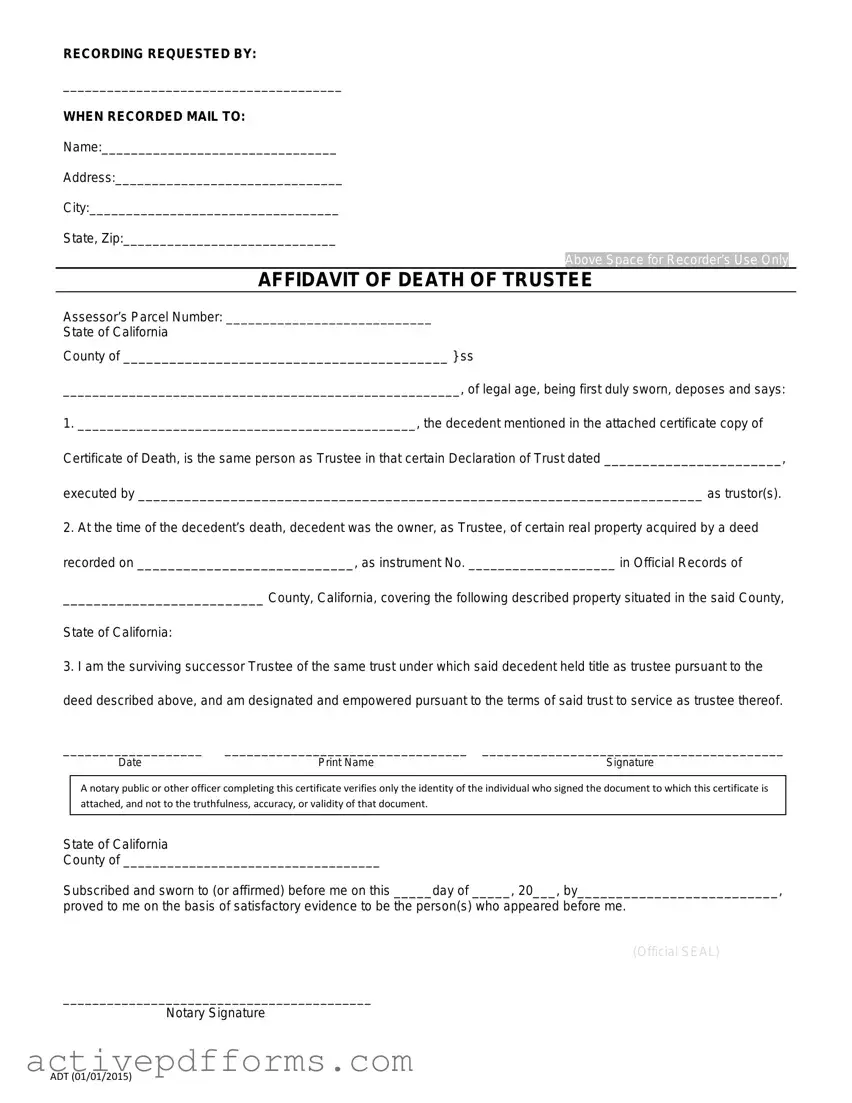RECORDING REQUESTED BY:
______________________________________
WHEN RECORDED MAIL TO:
Name:________________________________
Address:_______________________________
City:__________________________________
State, Zip:_____________________________
Above Space for Recorder’s Use Only
AFFIDAVIT OF DEATH OF TRUSTEE
Assessor’s Parcel Number: ____________________________
State of California
County of __________________________________________ } ss
______________________________________________________, of legal age, being first duly sworn, deposes and says:
1.______________________________________________, the decedent mentioned in the attached certificate copy of Certificate of Death, is the same person as Trustee in that certain Declaration of Trust dated _______________________, executed by _________________________________________________________________________ as trustor(s).
2.At the time of the decedent’s death, decedent was the owner, as Trustee, of certain real property acquired by a deed recorded on ____________________________, as instrument No. ____________________ in Official Records of
__________________________ County, California, covering the following described property situated in the said County,
State of California:
3.I am the surviving successor Trustee of the same trust under which said decedent held title as trustee pursuant to the deed described above, and am designated and empowered pursuant to the terms of said trust to service as trustee thereof.
___________________ |
_________________________________ |
_________________________________________ |
Date |
Print Name |
Signature |
A notary public or other officer completing this certificate verifies only the identity of the individual who signed the document to which this certificate is attached, and not to the truthfulness, accuracy, or validity of that document.
State of California
County of ___________________________________
Subscribed and sworn to (or affirmed) before me on this _____day of _____, 20___, by__________________________,
proved to me on the basis of satisfactory evidence to be the person(s) who appeared before me.
(Official SEAL)
__________________________________________
Notary Signature

